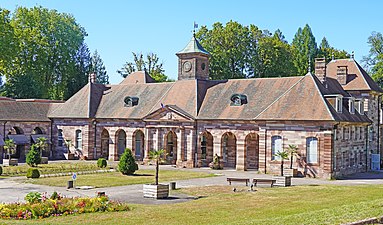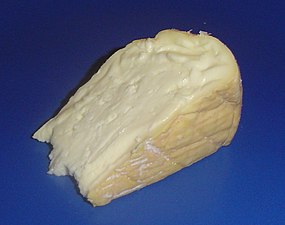 | |
 | |
| Haute-Saône department | |
| Capital | Vesoul |
|---|---|
| Residents | 236.018 (2018) |
| surface | 5,360 km² |
| no tourist info on Wikidata: | |
| location | |
 | |
Haute-Saône is a department in the former French region Franche-Comtéthat 2016 in the region Bourgogne-Franche-Comté rose. The department, serial number 70, borders the department in a clockwise direction, starting in the north Vosges, in the east of that Territoire de Belfort, in the south to the Doubs and law, in the southwest to the Côte-d'Or as well as in the northwest Haute-Marne.
places

- 1 Gray
 -
- - 2 Lure
 -
- - 3 Luxeuil-les-Bains
 - has more than a dozen hot springs that were used by the Romans
- has more than a dozen hot springs that were used by the Romans - 4 Ronchamp
 - former mining community
- former mining community - 5 Vesoul
 - is the prefecture (administrative seat) of the department.
- is the prefecture (administrative seat) of the department.

Gray
Lure

Luxeuil-les-Bains

Vesoul
Other goals
background
The department owes its name to the Saône, a 482 km long river that crosses it and rises in the Vosges. There are a total of 28 cantons and 580 municipalities. The area is 5,360 km², the maximum height at the Ballon de Servance is 1,216 m and the minimum height is 185 m at the confluence of the Saône.
language
getting there
mobility
Tourist Attractions
activities
kitchen
There are some culinary specialties in the area, in particular:
- Jambon de Luxeuil - the ham is a traditional delicacy in Franche-Comté. It is made from the whole leg of pigs traditionally reared and fattened in the Saône-Vosges region, and takes at least 9 months to make. The ham is first subjected to a slow maceration in a bath of Arbois red wine flavored with spices. It then rests on wicker racks in a cool and dry place for a month, where it absorbs salt and aromas and loses weight through natural drying. Then it is smoked in a traditional way in a pipe (a large traditional chimney smokehouse in Franche-Comté) with sawdust from conifers. Then it is hung up and dried for seven or eight months. Finally, after it has been washed and brushed, it can be cut and enjoyed.
- Gandeuillot is also called Gandoyau. The sausage is a specialty from the city of Fougerolles. It is a thick, elongated oval, large sausage made from a mixture of pork and pork offal, similar to the Bavarian pressack. The mass is placed in a pork rumen, boiled and smoked over a wood fire. It is eaten cold and warm. As a starter, it is served cut into small pieces. You can even grill it, then people like to eat it with potatoes.

Jambon de Luxeuil

Gandeuillot
- Cancoillotte, or Cancoyotte, is a viscous cheese similar to German cooked cheese. Traditionally, Metton cheese is melted with a little water or milk and salt or butter, sometimes garlic, is added. Commercial versions offer flavors such as cumin and others. It is eaten all year round and served cold or warm.
- Muenster is one of the most popular cheeses in France. The red smear cheese made from cow's milk is one of the most famous specialties of Alsace and the Vosges. However, it is also made in the Haute-Saône. The Munster from small dairies and dairy huts is called Munster fermier, from larger dairies than Munster laitier designated. Traditionally, from late May to early October, it is made once a day from pre-ripened evening milk from the previous day and morning milk.

Cancoillotte

Muenster
- Biscuit de Montbozon - pastries
- Griottines are small sour cherries, called sour cherries, macerated in a cherry liqueur with 15% vol1, made in Fougerolles (Haute-Saône) by the Grandes distilleries Peureux. They can be consumed alone or in a number of local dishes, both sweet and savory (in tapas with Comté cheese, on vanilla ice cream ...) Griottines are traditionally used in the Black Forest cake.
- Kirsch de Fougerolles - is a brandy with an appellation d'origine contrôlée (AOC) listed in the inventory of intangible cultural heritage in France since 2018.
nightlife
security
climate
trips
literature
Web links
http://www.haute-saone.pref.gouv.fr/ - Official website of the Haute-Saône department
















